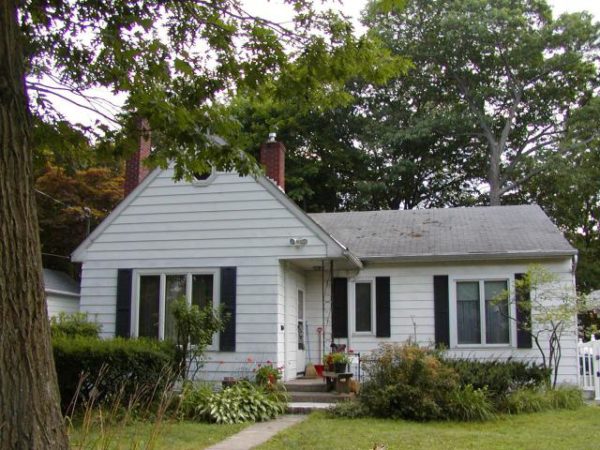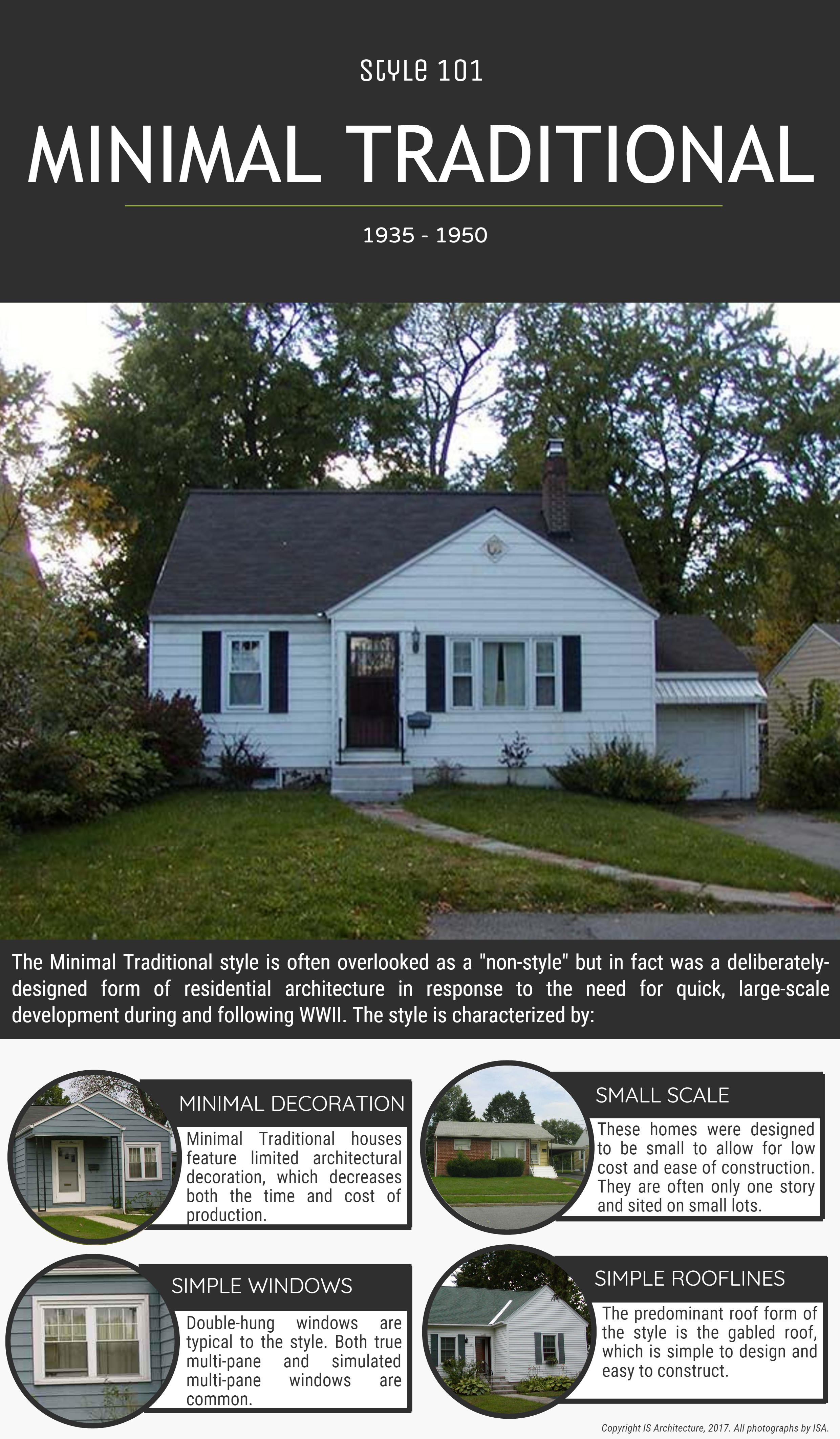Style 101: Minimal Traditional
The Minimal Traditional style often gets overlooked as a “non-style” but is in fact a deliberate style designed to be simple, economical, and mass-producible. These cost-effective, small houses came into vogue during the Great Depression since they could be built with Federal Housing Administration insured home loans. During World War II, Minimal Traditional houses could be built quickly to house relocated wartime factory and plant workers. Following the war, these houses maintained their popularity as an efficient way to house returning veterans under the GI bill. The need for both quick and economical construction led to small, simple houses that eschewed architectural details like spindlework, carving, or other purely decorative features. Designs were standardized and published in pattern books, which helped to spread the style throughout the country. Tract developments sprung up in the 1940s with Minimal Traditional homes as the stars, alongside the contemporaneous Ranch style.
Unfortunately, many of these homes have been significantly altered due to their perception as uninteresting or style-less. Their connection with suburban tract home development does make them likely contributors to historic districts that show the development of city planning and residential development.
There are almost 1,000 historic Minimal Traditional homes designated in San Diego. Could yours be next? Check out our handy infographic below to see if your house features the defining characteristics of the Minimal Traditional style!


